During the past two weeks, over 150 American Flamingos (Phoenicopterus ruber) have been reported in the eastern half of the United States, well north of their usual range—northern South America; Cuba, the Bahamas, and other Caribbean Islands; and the Yucatan Peninsula of Mexico. They are also found on the Galapagos Islands. Prior to being extirpated by hunting during the early years of the twentieth century, American Flamingos nested in the Everglades of Florida as well.
The recent influx of these tropical vagrants into the eastern states is attributed to Hurricane Idalia, a storm that formed in the midst of flamingo territory during the final week of August. Idalia got its start over tropical waters off Yucatan before progressing north through the Gulf of Mexico off Cuba to make landfall in the “Big Bend” area of Florida.
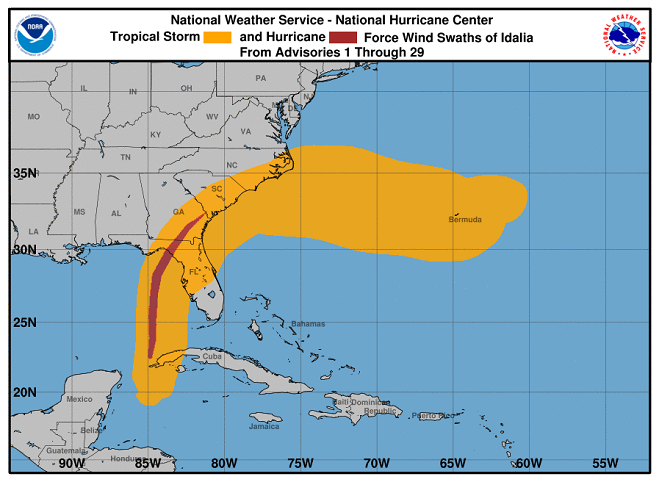
Birds of warm water seas regularly become entangled within tropical storms and hurricanes. In most cases, it’s oceanic seabirds including petrels, shearwaters, terns, and gulls that seek refuge from turbulent conditions by remaining inside the storm’s eye or within the margins of the rotating bands. The duration of the experience and the fitness of each individual bird may determine just how many survive such an ordeal. As a storm makes landfall, the survivors put down on inland bodies of water, often in unexpected places hundreds of miles from the nearest coastline. Some may linger in these far-flung areas to feed and gain strength before finding their way down rivers back to sea.
For birds like American Flamingos, which don’t spend a large portion of their lives on the wing over vast oceanic waters, becoming entangled in a tropical weather system can easily be a life-ending event. American Flamingos, despite their size and lanky appearance, are quite agile fliers. When necessary, some populations travel significant distances in search of new food sources. Some closely related migratory species of flamingos have been recorded at altitudes exceeding 10,000 feet. But becoming trapped in a hurricane for an extended period of time could easily erode the endurance of even the strongest of fliers. And once out over open water, there’s nowhere for a flamingo to come down for a rest.
It appears probable that, during the final week of August, hundreds of American Flamingos did find themselves drawn away from their familiar tidal flats and salty lagoons to be swept into the spinning clouds and gusty downpours of Hurricane Idalia as it churned off the Yucatan coast. Despite the dangers, more than 150 of them completed a journey within its clutches to cross the Gulf of Mexico and land in the Eastern United States.
Amy Davis in a report for the American Birding Association compiled a list of American Flamingo sightings from the days following the landfall of Hurricane Idalia. We’ve plotted those sightings on a satellite image of the storm.

The majority of the flamingos that survived this harrowing trip found a place to put down along the coast. But as the reader will notice, a significant number of the sightings were outside the path of the storm in areas not reached by even the outermost bands of clouds. Flamingos in Alabama, Tennessee, Kentucky/Indiana, Ohio, and Pennsylvania were found at inland bodies of water, most on the days immediately following the storm’s landfall. The lone exception, the Pennsylvania birds, were discovered a week after landfall (but may have been there days longer). How and why did these birds find their way so far inland at places so distant from the storm…and home? And how did they get there so quickly? The counterclockwise rotation of the hurricane wouldn’t slingshot them in that direction, would it?
Let’s have a look at the surface map showing us the weather in the states outside the direct influence of Hurricane Idalia during the storm’s landfall on August 30, 2023…

Now check out this satellite view of the storm during the hours following landfall…

Click the image above to play a GIF animation of GOES-16 satellite photos showing Idalia after landfall and the strong “flamingo highway” winds between the fronts. (It’s a big file, so give it a little time to load.) You’ll also note the ferocious lightning associated with both Huricane Idalia and Hurricane Franklin.
Did the inland flamingos catch a ride on these stiff “flamingo highway” winds? If not, they may have had a little help from a high pressure ridge that became established over the southern Appalachians as Idalia crept out to sea. The clockwise rotation of this ridge kept a similar flow over the “flamingo highway” for much of the four days that followed.

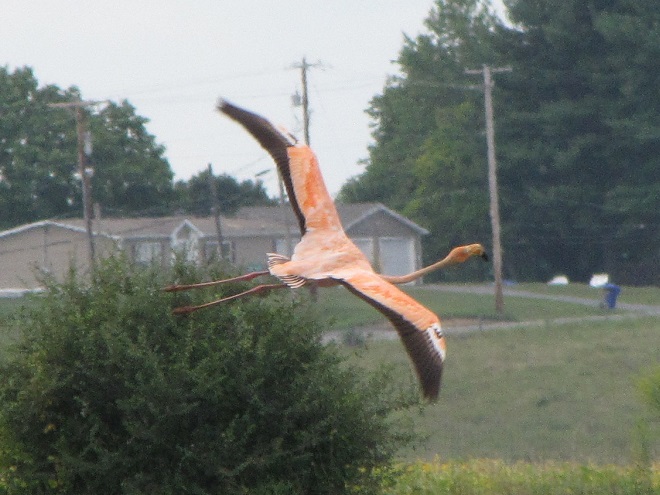


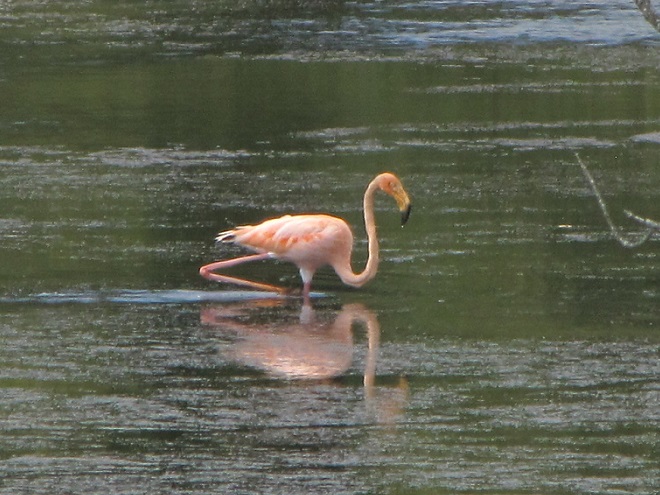
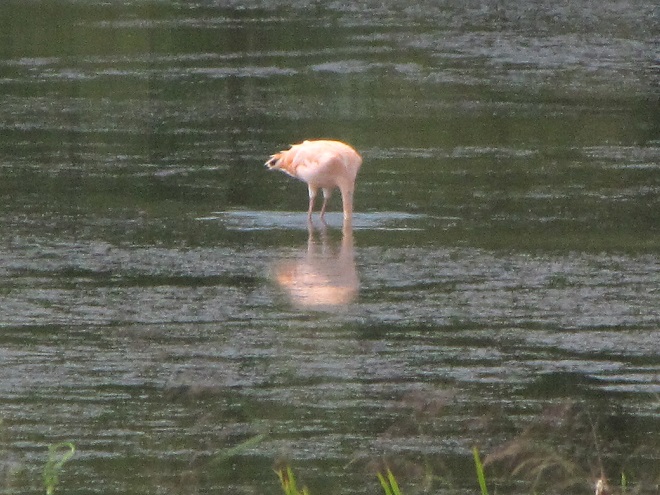
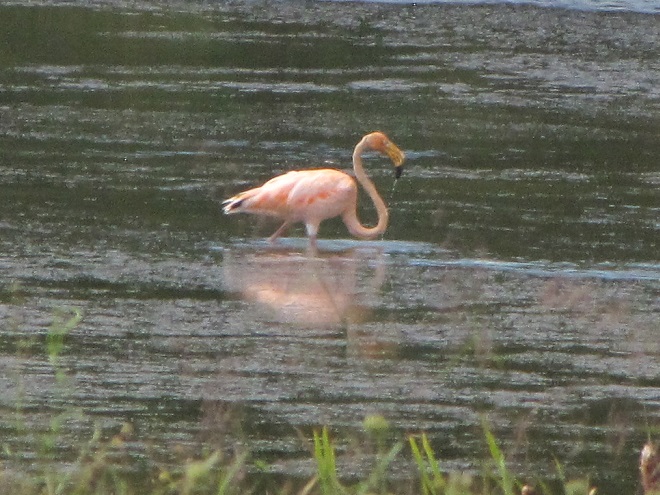
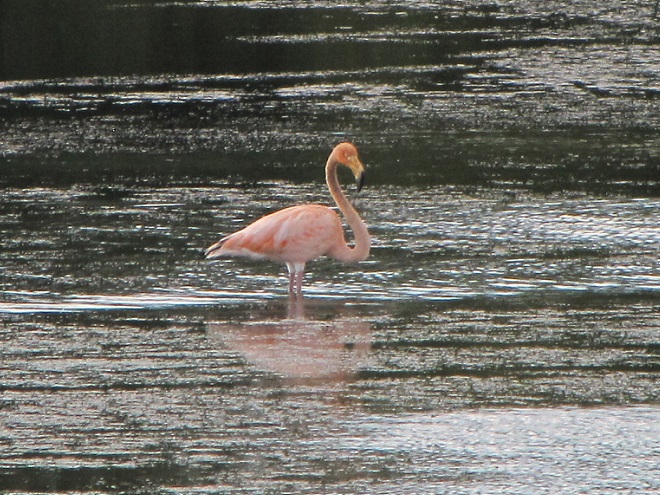
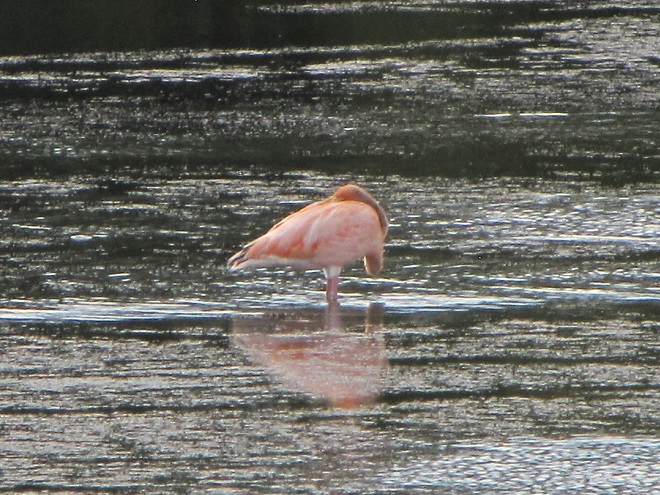
For vagrant birds including those carried away to distant lands by hurricanes and other storms, the challenges of finding food and avoiding hazards including disease, unfamiliar predators, and extreme weather can be a matter of life and death. For American Flamingos now loafing and feeding in the Eastern United States outside Florida, the hardest part of their journey is yet to come. They need to find their way back south to suitable tropical habitat before cold weather sets in. The perils are many. Theirs is not an enviable predicament.

